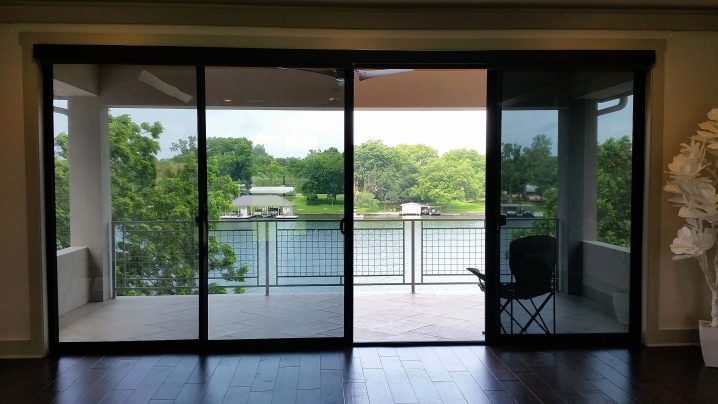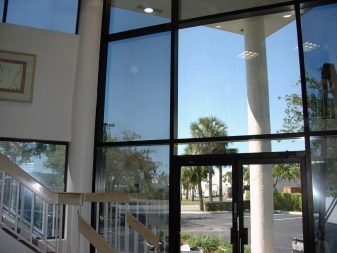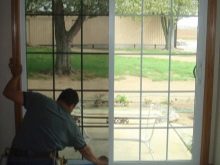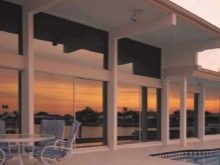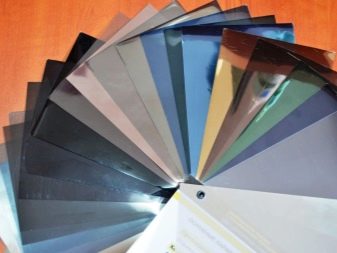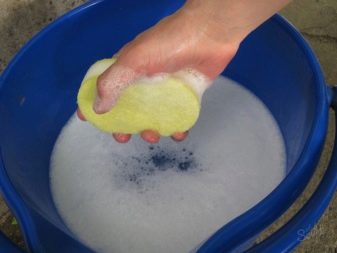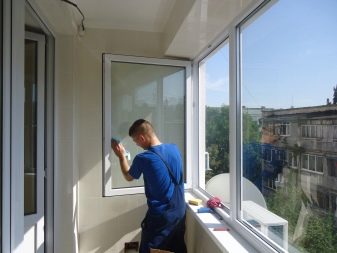How to toned windows in the apartment?
Warm sunshine is often the cause of significant discomfort in a residential building. Getting into the rooms, they not only irritate the eyes, but also cause a noticeable increase in the temperature in the room. For those who do not want to defend themselves against this unpleasant phenomenon with thick curtains, there is a good way out - window tinting.
Special features
Even if the room is on the shady side, everyone will surely know such unpleasant phenomena as:
- overheating of the apartment in the summer heat;
- fading wallpaper and furniture from the constant exposure to sunlight;
- discomfort from glare rays when watching TV or working at the computer.
If you shade the room with thick curtains, then this does not solve the problem of overheating the apartment. In addition, curtain windows make the room more gloomy.
That is why they use a special film, the main function of which is athermal. It creates blackout and effectively solves all the problems of overheating and burnout of color on interior items.
Tinting film is a material that perfectly filters sunlight. Thanks to this protection, up to 80% of the UV light is reflected, therefore a cool temperature is maintained in the room during the summer.
The advantages of tinting are obvious:
- As a rule, the tinting coating is fixed in order to largely mute the intense bright light of the sun, which beats directly into the glass.
- Tinting reliably keeps the heat in the apartment. This is true in the winter, when the film does not let the warm air out, minimizing the appearance of any "cold bridges".
- Any dubbing film has a mirror surface, so from the outside it is impossible to see what is happening in the apartment.
- Modern decorative films can become a stylish accent in the interior; photo printing is often applied to them, which emphasizes the overall design concept of the interior.
- If the glass is broken, then its fragments are usually scattered throughout the room. This does not happen if the window is zatonirovanno. For any mechanical damage, glass fragments remain on the film. This makes it more safe to dismantle the glass and troubleshoot.
- Some manufacturers produce films with armored properties. Such options can protect the apartment not only from unwanted light, but also illegal entry from outside.
- The screens of the monitor and TV when using the film on the windows do not glare, which allows you to work quietly or comfortably watch your favorite show.
- A wide range of films offers the possibility of darkening different degrees depending on the wishes of the user.
- Houseplants often die from burning rays and contact with red-hot glass. When tinting will provide optimal light and heat for growing on the windowsill representatives of the flora.
- In addition, the film well protects the coating from any minor damage and chips.
Of course, film is not an ideal solution. It has its drawbacks:
- If the window faces the north or is in shading, the overall atmosphere in the room after toning becomes rather gloomy. This is due to the fact that the film transmits only the rays of a certain spectrum, so, for example, if a silver film is attached to the glass, then the room itself will acquire grayish shades.
- Most of the sunlight in contact with tinted windows is reflected, so very few rays get inside, which significantly reduces the degree of heating of the apartment. This is noticeable in cold weather and on rainy days.
The principle of the protective film is similar to the effect of sunglasses, which reflect the waves of a certain type, size and characteristics. Such a film is produced by mechanical rolling of several layers of polyester, and the thickness of the film and filtration capacity largely depend on the number of these layers.
How to choose?
The most effective protection can be achieved using factory-tinted glass, but most often ordinary consumers resort to films that can be applied independently at home.
There are several options for film coating:
- mirror;
- protective;
- sunscreen
Thanks to the mirror tint, you can create a visual effect of a mirror with a variety of shades on the glass.
Such a coating reflects 80% of sunlight and 75% of heat, creating an effective protection against heat, scorching sunlight, radiation and ultraviolet, thanks to which coolness is maintained inside the room and a healthy microclimate is formed.
Large selection of colors allows any interior and even the facade to get a stylish and luxurious look. In addition, tinting is 100% protecting residents from the prying eyes of neighbors - everything that happens in the house is completely hidden from prying eyes.
Keep in mind that the mirror film is effective only in the daytime, by the evening its effectiveness is significantly reduced. Therefore, after turning on the light in the house should use curtains or blinds.
Sunscreens also reflect 80% of the light. Such toning is used to protect computer and television equipment from sun glare - it is very convenient on a clear day.
Modern sunscreens make the facade more aesthetic and stylish. The undoubted advantage of the material is low cost. It is much cheaper than its counterparts.In addition, these films contribute to the formation of comfortable for adults and children in the room air temperature.
Protective films have an additional function - they are characterized by increased impact resistance and resistance to other types of mechanical damage.. Such coatings can protect the glass from damage due to impact, and they also do not allow attackers to sneak inside. Some modifications even save from a bullet.
Tinted DIY
Experts say that the highest quality glass pasting tinted films is possible only in factory conditions. However, it is necessary to consider how to tint the windows with your own hands at home.
This will require the following materials and tools:
- Directly sunscreen film (do not forget to measure the area of the glass sheet in advance; you will need 3-4 cm more film);
- a solution of liquid soap (it is preferable to use colorless, mixed with water in a ratio of 1 to 3);
- spatula with a soft sponge;
- trowel with a hard rubber tip;
- rags.
First you need to dismantle the glass. Of course, many try to do without it. Immediately, we note that in this case, the dimensions of the coating after drying can decrease, and areas on which there will be no coating will appear on the surface of the glass. Therefore, in the framework of this article, an option is considered in which all the technological stages of toning are observed.
During the sizing material will take time to shrink. During this time the film takes its final dimensions. The process may take more than one day, so you can temporarily install a sheet of plywood in place of the glass or stretch a thick film of polyethylene. Further procedure looks like this:
- To begin with, the treated surface should be degreased, then the glass is washed with clean water, and the moisture is removed with a spatula and sponge.
- Using a spray bottle, apply a uniform layer of soap solution to the glass, then most of it should be blotted with a sponge.
- The film is placed on the glass with the back side, after which the protective layer is carefully removed.
- The film is gently turned over and fixed on the upper part of the glass, after which it should be glued evenly over the entire surface from top to bottom with a bead with a rubber tip.
- In the process of pasting air bubbles inevitably arise. They are removed with the help of rags in smooth movements from the center to the edges. Pay attention to completely get rid of the bubbles in this way will not work - microscopic elements will remain in any case. If the sticker technology was observed correctly, the bubbles disappear in the drying process due to the internal pressure created as it dries.
- After the final drying, the edges of the film are cut in accordance with the dimensions of the glass surface.
- After the film is fixed, you can fix the glass back in the design. With the help of beads, the coating acquires the most effective fixation.
Keep in mind that in the future while washing windows you do not need to make an effort and rub the glass with special diligence. In this case, the film may be damaged or move on the glass.
Tips
Feedback on the use of tinting films are positive. It is an affordable and at the same time quite effective tool that allows you to quickly and simply rid the living space of excessive sunlight and exhausting heat.
Not everyone is able to install a split system or even a window air conditioner, so toning is optimal for those who are forced to flee from the heat in a limited budget.
This method is also effective in summer cottages and in summer houses, where people do not live permanently. In such cases, spending tens of thousands to install the air conditioner in the room is simply irrational.
The only drawback that consumers point out is the difficulty of film removal. It is no secret that over time the film may lose its aesthetic appearance, or it will no longer be necessary. In this case, getting rid of the coating is not so easy, despite the fact that any film is removable. Therefore, experts suggest using one of the following methods:
- You can remove the tint using a steam generator. This device provides the effect of chemical treatment without the use of reagents due to the strong vapor pressure. Such processing is an excellent alternative to chemistry and rather quickly removes the film from the surface of the glass unit. After that, you need to wipe the surface of the window with Komet powder.
- If after removing the film on the surface remained small pieces of toning, do not rub hard with abrasives. Try using the Sanit Cream Kitchen Surface Cleaner or equivalent. This paste is optimal for faience and stainless steel, it is also suitable for glass, from which it effectively removes any stains that remain after removing the film.
- "Killing" means "Schumann"which mistresses use at the strongest blockages, helps to eliminate dubbing film from glass. However, keep in mind that this method can only be used with glass windows. Plastic windows under the influence of "Schumanit" simply deformed.
And of course, do not forget about security measures when working with this aggressive composition. All processing should be carried out in protective gloves, you can even use a respirator.
If the film contains polyethylene terephthalate (lavsan), then it will be very difficult to get rid of such a film. The only possible method here is mechanical - the coating is removed with a thin stainless steel blade.
On how to tint the window do it yourself, see the next video.







